FRIDAY, MARCH 28, 2025
March 2025

FRIDAY, MARCH 28, 2025
March 2025
Grand Prize: $1,000 Cash
2 Second-Place Prizes: $500 Cash
4 Third-Place Prizes: $250 Cash
20 Fourth-Place Prizes: $100 Cash
Join us at Louisburg College Auditorium (Seby B. Jones Performing Arts Center). Only registered Wake Electric members attending the meeting are eligible to win cash prizes. Members in attendance will receive one $25 Walmart gift card per household. Require special accommodations for attending the meeting? Call 919.863.6300 or 800.474.6300 or email us at information@wemc.com two weeks prior to the event.
Bring
$25

This card is used for registration and in the drawing for cash prizes. If you have questions about this year’s meeting, please call 919.863.6300 or 800.474.6300 or email us at information@wemc.com. Registration 5:30 p.m.
Friday, March 28, 2025
Louisburg, NC
Louisburg College Auditorium (also known as the Seby B. Jones Performing Arts Center)
Lineworker demonstration (pending weather) 6 p.m. Activities for school-aged children, K–6 6:55 p.m. Business meeting 7 p.m. Drawing for cash prizes About 8 p.m.
Adjournment
Wake Electric Membership Corporation members will meet in Louisburg on Friday, March 28, 2025. The business meeting will begin at 7 p.m. in the Louisburg College Auditorium in the Seby B. Jones Performing Arts Center. Members will consider and act on the following matters:
Reports of officers, directors and committees;
The Committee on Nominations and Resolutions met Oct. 29, 2024, to select the nominees for the Board of Directors. Jeff Holt was elected chairperson of the committee. Other members of the committee were Stacy Askew, (Secretary), Elnora Morehead, Kevin Murphy, Cynthia Colvin, Spencer Renfrow, Kay Stark Jr., Tom Parrish and David Hughes. The committee nominated the following:
District 1 Allen Nelson, Stovall 3-year term
District 4 William Joe Hilburn, Raleigh 3- year term
District 8
Robert Joe Eddins, Zebulon 3-year term
WAKE ELECTRIC MEMBERSHIP CORPORATION
Mike Dickerson, Oxford, President
Allen Nelson, Stovall, Vice President
Greg Fuller, Zebulon, Secretary
Bob Hill, Wake Forest, Treasurer
Daniel Keel, Louisburg
Joe Eddins, Zebulon
Joe Hilburn, Raleigh
Jackie Thompson Sr., Wake Forest
Suzy Morgan, Wake Forest
Election of three directors of the cooperative;
Also, any other business that may come before the meeting or any adjournment or adjournments thereof.

—Greg Fuller, Secretary Wake Electric Membership Corporation
A total of $5,000 in cash will be awarded to some lucky members this year! Members in attendance will receive one $25 Walmart gift card per household. If you cannot attend, the proxy card, attached below, must be given to:

An adult/close relative living in the same house
A Wake Electric member in his/her own right, or An Organization Voting Delegate
Churches, businesses and civic organizations may use either the registration card or the special designation form mailed to them. If a person presents himself or herself as representing a member organization either without a card or form, or the card or form is not completed and signed, the organization will be eligible for the prize drawing only.
Proxies for members are held and voted by the designated proxy holder. The card must be completed and signed by the member to be eligible for voting privileges. Proxies are not eligible for prizes.
I cannot attend Wake Electric’s Annual Meeting on March 28, 2025. As a member of Wake Electric Membership Corporation, a North Carolina Corporation, I, the undersigned, hereby appoint:
(spouse, adult/close relative living in the same home, another Wake Electric member or Organization Voting Delegate)
my proxy to vote in my stead at the Meeting of Members, Friday, March 28, 2025, at the Louisburg College Auditorium in the Seby B. Jones Performing Arts Center.
I realize that it is my duty as a member of an electric cooperative to take an active interest in its affairs to exercise my voting privilege in person. However, I find it impossible to attend the meeting in person.
I have carefully considered the business which, to
my knowledge, is to be acted upon and have decided to give my proxy to the person named above. This person is one of the following: (1) my spouse, (2) an adult/close relative living in the same house, (3) a Wake Electric member in his/her own right, (4) or an Organization Voting Delegate. This person agrees to vote this proxy on all matters as he/she honestly believes I would vote if I were present. I hereby ratify and confirm my proxy’s vote in my stead.
WITNESS MY HAND AND SEAL
THIS ________________DAY OF ___________(MONTH) 2025
Member’s Signature or Organization’s Name (as printed on the front of the card)

Published by
Co-ops support community growth page 7 Cold floor? Fix it with more than socks. page 15


NC 4-H Camps offer a 6 day, 5 night residential camping experience completely TECH free starting at $545/week!
Activities include horseback riding, canoeing, kayaking, team building and high ropes, swimming, arts & crafts, talent show and more.
We offer three unique and beautiful facilities in convenient locations across the state.
All camps are owned and operated by NC State University and are American Camp Association accredited, adhering to the highest standards for safety and quality.
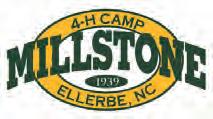
(ISSN 0008-6746) (USPS 832800) Volume 57, No. 3
Published monthly by
3400 Sumner Blvd., Raleigh, NC 27616-2950
Scott Gates, CCC Editor
Warren Kessler Creative Director
Renee C. Gannon, CCC Senior Associate Editor
Rue Reynold Editorial Assistant
Jessica Armstrong Graphic Designer
Tara Verna Creative Services Associate
Donna Natosi Digital Strategist
Keith Alexander Advertising Keith@carolinacountry.com
Joseph P. Brannan Executive Vice President & CEO
Nelle Hotchkiss Senior Vice President & COO
Kristie Aldridge, CCC Vice President
North Carolina’s electric cooperatives provide reliable, safe and affordable electric service to 1 million homes and businesses. The 26 electric cooperatives are each member-owned, notfor-profit and overseen by a board of directors elected by the membership.
Why Do We Send You Carolina Country Magazine? Your cooperative sends you Carolina Country as a convenient, economical way to share with its members information about services, director elections, meetings and management decisions. The magazine also carries legal notices that otherwise would be published in other media at greater cost.
Your co-op’s board of directors authorizes a subscription to Carolina Country on behalf of the membership at a cost of less than $5 per year.
Subscriptions: Individual subscriptions, $12 per year. Schools, libraries, $6.
Carolina Country is available on digital cartridge as a courtesy of volunteer services at the NC Department of Cultural Resources, Library for the Blind and Physically Handicapped, Raleigh, NC 888-388-2460.
Periodicals postage paid at Raleigh, NC, and additional mailing offices. Editorial offices: 3400 Sumner Blvd., Raleigh, NC 27616-2950. Carolina Country® is a registered trademark of the North Carolina Association of Electric Cooperatives, Inc.
POSTMASTER: Send all UAA to CFS. (See DMM 707.4.12.5); NON-POSTAL AND MILITARY FACILITIES: Send address corrections to Carolina Country, 3400 Sumner Blvd., Raleigh, NC 27616-2950.
All content © Carolina Country unless otherwise indicated.
Contact us
Phone: 919-875-3091
Mail: 3400 Sumner Blvd. Raleigh, NC 27616-2950
Web: carolinacountry.com
Social:
Email: editor@carolinacountry.com
Change of address: Please contact your electric co-op or go online to carolinacountry.com/address
Experiencing a power outage?
Please contact your electric co-op directly to ensure prompt service. Visit carolinacountry.com/co-ops to find yours online.

8
18
A local crop makes for an unexpected canvas.
Why do you love the North Carolina mountains?
Three events spark inspiration this spring.
The Folk School in Cherokee County is one of many spots around the state where you’ll find artisans working wonders with an unusual medium: gourds. Learn more about how it’s done on page 8. Photo courtesy of the John C. Campbell Folk School.
Unforgettable things can happen in games on the field, court or rink, and whether it was a game you watched or played in, we’d like to hear about your most memorable sports moment. Learn more on page 17.
As March days begin to give us hints of spring, many begin planning for the coming season’s plantings, whether for colorful landscaping or for a tasty harvest (or so I’m told by those with a greener thumb than mine). This year, consider saving a patch for gourds, which can make for fine fall décor or a natural canvas for inspired artists. Learn more on page 8. Also, we asked readers what they love about the NC mountains — get inspired to go find a mountain view on page 16.
—Scott Gates, editor
The story on the Rosenwald Schools (“Documenting History,” February 2025, page 20) was very informative. [February was] Black History Month, and I appreciate the effort to highlight the history and culture of all members of our co-op. Thanks for publishing this story.
Loneese Powell, Columbus County, a member of Brunswick Electric
Our family has enjoyed reading Carolina Country magazine since the late 1960s! As a small child, I partially learned to read with it. Family members that moved away made sure to get a subscription to continue their collection. What a gift it is to now be able to revisit past issues digitally [on carolinacountry.com]! I value the print edition, but sometimes the mail journey is not kind to it, or someone “borrows” it permanently. Always nice to have a backup!
Charles Hill, Clarkton, a member of Four County EMC




I could not resist the charm of the picture and story of Wayne Hussey’s mules Mabel and Jane (January 2025, page 11). I am reminded of our Virginia mule team Grace and Glory, driven and beloved by my late husband Eddie Shelton to farm work, school trips, church rides, wedding celebrations and even that final funeral caisson, including his own last October. Yes, times have changed, but anyone who has been blessed with the mule experience will always smile at the memory. Keep those lines in your hands, Mr. Hussey.
Rebecca Shelton, Fredericksburg (Va.), a member of Northern Neck Electric Cooperative Serving Veterans
Your February cover brought me to tears.
Florence Wilson, Wake Forest, a member of Wake Electric

A Juan Carlos Garcia, Boone
A member of Blue Ridge Energy
B Jodi Rhodes, Clemmons
A member of Brunswick Electric
C Jana Elliott, Pilot Mountain
A member of Surry-Yadkin EMC
D Vickie Sealock, Mars Hill
A member of French Broad Electric
Submit your photo!
May theme: Dogs (Deadline March 20)
June theme: Reflections (Deadline April 20)
July theme: Selfies (Deadline May 20)
Send us your best shots based on an upcoming theme — we’ll pay $25 for those published. Submit high resolution digital photos and find full terms and conditions at carolinacountry.com/snapshots (no emails, please). We retain reprint and online rights for all submissions.






By Khalil Porter

An open field, or even the treeless span of ground maintained under your electric co-op’s power lines, may not look like critical habitat. But for thousands of species of pollinators in North Carolina, it’s just that. The flowering shrubs and plants found in grassy areas throughout the state are essential for ensuring biodiversity and maintaining food webs. Most crops, including fruits, vegetables and nuts, depend on pollinators for healthy yields.
Despite the seeming abundance of the moths, bees, butterflies and other insects that keep plants pollinated, many of our state’s pollinators are at risk. Habitat loss and pesticide use are among factors working against them, reducing numbers and making natural habitat scarce.
Digital Extras
Visit carolinacountry.com/extras to learn more about supporting pollinators — as well as the fascinating life cycle of the monarch butterfly — from the NC Wildlife Federation.
North Carolina’s 26 electric cooperatives maintain thousands of miles of lines, and as such have a unique opportunity to support pollinators with all that open natural space. By planting native grasses and low-growing plants in rights-of-way, co-ops are saving on maintenance costs and reducing reliance on herbicides, protecting pollinators from harmful chemicals. Increasing habitats through these practices can boost populations of threatened or endangered species, as well as those on the brink like monarch butterflies.
Monarchs are an iconic, migratory species known for their bold orange and black wings, although pesticide use, urban development and a changing climate have reduced monarch populations by more than 80% in the last two decades. Monarchs are under consideration to be listed as threatened under the Endangered Species Act, an evaluation that will continue in coming months.
North Carolina’s Electric Cooperatives are supporting efforts to rebuild monarch populations, with environmental stewardship as a
core pillar of our mission. We are a part of the NC Pollinator Conservation Alliance’s energy committee, which shares ideas about creating pollinator habitat in utility rights-of-way and on solar farms. For one, we’ve made a transmission line right-of-way near the Hamlet power plant a Pollinator Pitstop along the state’s “Butterfly Highway,” a statewide conservation restoration initiative of the North Carolina Wildlife Federation (NCWF). Anyone can join the effort by converting part of a yard, or even a simple container garden, into a pitstop — visit ncwf.org/habitat/butterfly-highway to learn more. How else can we all contribute to supporting pollinators? When selecting plants for gardens and community spaces, choose native, pollinatorfriendly options, and reduce pesticide and herbicide use to create safer environments for pollinators. Support conservation organizations, like the Conservation Trust for North Carolina (ctnc.org) and Conservation Legacy (conservationlegacy.org), both of which have partnered with North Carolina’s Electric Cooperatives to preserve our state’s beauty and instill environmental responsibility in the next generation.
Supporting conservation efforts and North Carolina’s pollinators through initiatives like these is simply the right thing to do — for the environment, for our communities and for future generations.
Khalil Porter is manager of environmental affairs for North Carolina’s Electric Cooperatives.






























The best walk-in tub just got better with breakthrough technology! Presenting the all new Safe Step Walk-In Tub featuring MicroSoothe. ® An air system so revolutionary, it oxygenates, softens and exfoliates skin, turning your bath into a spa-like experience. Constructed and built right here in America for safety and durability from the ground up, and with more standard features than any other tub.
✓ Heated seat providing warmth from beginning to end
✓ Carefully engineered hydro-massage jets strategically placed to target sore muscles and joints
✓ High-quality tub complete with a comprehensive lifetime warranty on the entire tub
✓ Top-of-the-line installation and service, all included at one low, affordable price
You’ll agree – there just isn’t a better, more affordable walk-in tub on the market.
Daylight saving time begins March 9, a practice that was first put into place in WWI to conserve fuel and power.
Don’t just adjust clocks this month, use it as a reminder to check and change batteries in CO2 and smoke detectors around the house.
Keep children and pets safe in your home; Poison Prevention Week (March 16–22) reminds us that some household hazards are stored in plain sight.
Ahead of spring and summer rains, make a visual inspection of your roof. Call a roofer if you spot rotting eaves or missing/broken shingles.
The U.S. Department of Energy (DOE) recently named North Carolina’s Electric Cooperatives among the first utilities to participate in its Utility and Grid Operator Technical Assistance program. The program, managed by DOE’s Office of Energy Efficiency and Renewable Energy (EERE) and Grid Deployment Office, seeks to equip utilities and grid operators with the expertise and resources needed to accelerate grid deployment and meet growing energy demand.

is powered by Wake Electric. “We’ll be able to apply lessons learned across currently deployed microgrids as well as future projects on electric cooperative systems.”
The program offers three tracks: Key Assist, Interconnection Assistance and rolling technical assistance. North Carolina’s Electric Cooperatives is participating in the Key Assist track, which provides utilities with up to $1 million of technical assistance to navigate complex grid integration challenges.
“Funding through the program will be invested in improving microgrid support of the cooperative members and the electrical grid, utilizing the Eagle Chase residential microgrid in Youngsville as a testbed,” said Erik Hall, director of energy services & technology for North Carolina’s Electric Cooperatives. The microgrid
Additional electric co-ops participating in the Key Assist program are Vermont Electric Cooperative and Golden Valley Electric Association (Alaska), as well as Puget Sound Energy and a Guam-based municipal utility.
“These utilities represent a diverse cross-section of the American grid, encompassing both rural and urban landscapes, and serving millions of customers,” said EERE Principal Deputy Assistant Secretary Jeff Marootian. “This groundbreaking program, powered by collaboration, will accelerate grid deployment and the integration solutions needed to deliver more affordable, equitable and reliable electricity to communities throughout the country.”

REDLG funding supported critical services across the state
North Carolina’s electric cooperatives are powering progress across the communities they serve, investing in resources and services that create lasting benefits for their members. That commitment continued in 2024, as co-ops were awarded nearly $10.8 million in funding for 17 projects from the U.S. Department of Agriculture’s Rural Economic Development Loan and Grant (REDLG) program.
The figure reflects a continued trend of success for the co-ops’ utilization of the REDLG program. Over the past five years, North Carolina electric co-ops have received more than $39 million through 78 awards. Funding from 2024 will help finance industrial shell buildings in rural areas and provide first responders with top-of-the-line equipment.
“Cooperatives are rooted in the communities they serve, and through the REDLG program, they are playing a key part in helping these rural areas prosper,” said Ann Fitts, community development specialist and REDLG program lead for North Carolina’s Electric Cooperatives. “They know the needs of their members, and through these awards, they’ve been able to help deliver resources that directly impact the lives of many.”
REDLG awards provide zerointerest pass-through loans to rural cooperative utilities to fund local projects that create and retain jobs, boost economic growth and improve quality of life in rural America.
Through the funding, co-ops have helped emergency services, such as fire departments, EMS and police departments, strengthen their capabilities by purchasing new fire trucks and patrol cars and improving emergency service facilities. These enhancements have not only supported the staff working hard to serve their communities, but also
improved response times, and in some cases, helped lower homeowners insurance rates for local residents.
REDLG funding has also supported employment growth in rural North Carolina by financing the construction of industrial buildings where businesses can relocate or expand their operations. These opportunities help create jobs, increase the tax base and attract investments in co-op communities.
“Being able to deliver funding from the REDLG program to our community partners is exciting because it directly supports the growth and vitality of our rural communities,” said Tasha Rountree, director of community relations and economic development at Blue Ridge Energy. “By empowering local businesses, organizations and first responders, we’re investing in a brighter, more prosperous future for the people we serve.”
—Josh Conner, North Carolina’s Electric Cooperatives


A North Carolina crop makes for an unexpected canvas
By Margaret Buranen
Judi Fleming, president of the North Carolina Gourd Society, fell in love with gourds after realizing the wide variety of art she could create with them.
aAbout 30 years ago, Summerfield artist Judi Fleming found herself with free time between two errands. Since she was too far away to return home, she decided to visit a local event: a gourd festival. Judi never made it to her second errand.
“I was hooked,” she confesses. “I will do art in any medium, and you can do anything with gourds — painting, sculpture, musical instruments, basket weaving. That’s why I like gourds so much!”
Noting that art supplies aren’t cheap, she adds, “With gourds you can grow your own canvas. It’s very inexpensive art.”
Gourds are grown for food, but only the smaller, ornamental varieties. Besides food and art, gourds are also utilitarian. They can be crafted into bowls, dippers, banjos and other musical instruments. Small egg-shaped gourds can even be put in chicken coops to encourage young hens to lay or to direct hens to nesting boxes.
Gourds range in size from an inch or two in diameter to giant African varieties that are 80 inches in diameter. The main types you’ll find are ornamental gourds; bottle gourds — large, inedible hardshell varieties; snake gourds, which can be made into instruments like didgeridoos; and luffa or loofah, which can be peeled and used as sponges.
Judi says there is only one gourd variety that is native to the U.S., the colorful Cucurbita types sold in supermarkets alongside squash and often used for fall décor. The many other varieties were all brought here as seeds by settlers from various countries.
“All gourds grow on vines, and some vines can grow as tall as 100 feet on trellises. You need space to grow gourds, and it’s a lot of work,” Judi explains.
Gourd vines can be left on the ground instead of being attached to a trellis. The disadvantage is that each gourd will develop a flat side where it rests on the ground. Artists who want perfectly round gourds need those grown on trellises.

Before gourds can be used for art they must be allowed to dry out. The only thing required for that process is time. And if you ever come across a seemingly old pile of moldy gourds, those aren’t trash, they’re treasure. The mold that forms on the outside of the gourd helps to draw out the inside moisture, Judi explains.
“When you shake a gourd and hear the seeds inside rattle, then you know it is completely dry. You scrub off the mold, let the outside dry and then it’s ready for art.”
The larger the gourd, the longer it will take to dry out.
The smallest gourds will dry in 40 days. Middle sized ones take about 100 days to grow and three months to dry. Large gourds take approximately 140 days to reach maturity and up to two years to dry.
Since there are more gourd artists than gourd growers, a market exists for pre-dried gourds. Gourd growers who want to reach these buyers often sell their ready-for-art gourds at festivals and fairs.
Recently retired from her government job, Judi donates some of her gourd art to benefit Red Dog Farm Animal Rescue Network in Stokesdale. She can’t keep up with demand for her gourd birdhouses.
“They’re designed to be used by North Carolina’s most common songbirds,” she notes.
While established gourd artists sell their work through their own websites or at arts and crafts shows, art galleries offer a select high-end market for some artists. Judi says the record price for a gourd work of art is $35,000. The North Carolina artist uses semi-precious and precious stones in her art.
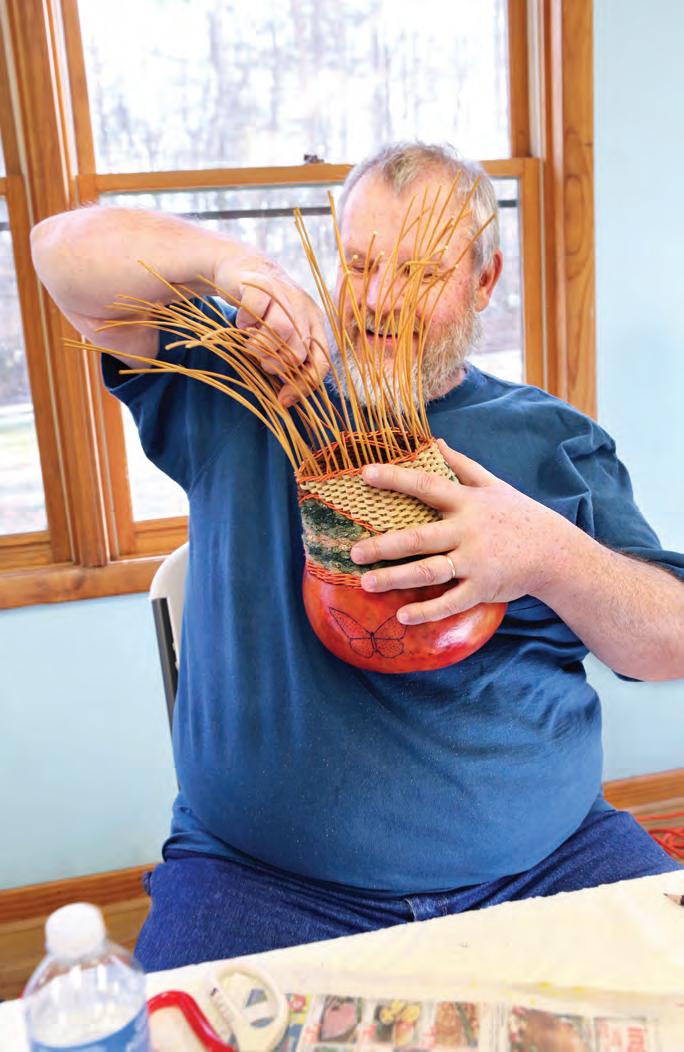
For those interested in meeting gourd growers, artists and general enthusiasts, North Carolina has several resources. The North Carolina Gourd Society, of which Judi serves as president, was established in Cary in 1937 as the first gourd society in the country and the “alpha” chapter of the American Gourd Society.
The society hosts the annual North Carolina Gourd Arts and Crafts Festival, which in 2025 will be held Sept. 6–7 at the state fairgrounds in Raleigh. (This year’s theme is “Happy Holidays” — visit ncgourdsociety.org for the latest information and vendor applications.)




Another event, the Gourd Gathering (gourdgathering.org), will be held May 28–June 1 in Waynesville. Judi notes that it will have 94 classes, mostly instructive, not competitive. Other classes can be found year-round, including at the John C. Campbell Folk School in Cherokee County (folkschool.org). As The Folk School affirms: “With gourds, possibilities are as endless as your imagination.”
Margaret Buranen writes for Carolina Country from her home in Kentucky.




















Friday, March 28, Louisburg
n the true spirit of cooperatives, Wake Electric members will hear a state of the co-op report, learn of major milestones and successes reached by their co-op in the past year, and have the opportunity to ask questions. Only registered Wake Electric members attending the meeting will be eligible to win cash prizes. Members in attendance will receive one $25 Walmart gift card per household. Upon registration, members in attendance will be registered for the prize drawings later that evening:
Grand prize—$1,000
Two 2nd place prizes—$500
Four 3rd place prizes—$250
Twenty 4th place prizes—$100

There will also be special activities for school-aged children (K–6th grade). Members who attend will also receive a $25 Walmart gift card (one per household).
Friday, March 28
Louisburg College Auditorium 501 Main Street, Louisburg, NC Registration—5:30 p.m. Business Meeting—7 p.m.
Visit wemc.com/annual-meeting for more information or call 800.474.6300 or 919.863.6300 or email us at information@wemc.com.
The special cover wrap around your March Carolina Country magazine has your official registration card with your member number on it. Bring this card to the meeting to enter for prize drawings.
due by March 31.
Learn more and apply online at ncelectriccooperatives.com/sports-camps



Follow these safety and prepara on ps during spring and summer storm season.
Be Prepared.

• Create an emergency kit with power outage essen als: ba eries, power banks, ashlights, non-perishable foods, water, medical supplies and prescrip ons.



• Develop an emergency family plan with mee ng points, communica on methods and evacua on routes. Share your plan with all family members.
• Monitor weather for important updates that could impact your emergency plan.


• Ensure a safe shelter. Stay away from windows and doors. In tornadoes, move to a basement or an interior room without windows.
• Use portable generators safely: operate outdoors in well-ven lated areas, place on a at, dry surface, do not overload and always read the opera ng manual before use.




• Severe storms can bring down tree limbs and power lines. If you encounter a downed line, stay back. Always assume a downed line is live and dangerous.










March is an ideal time to service your home cooling system, ensuring it runs efficiently when the heat of summer arrives. Routine maintenance, like cleaning or replacing filters, checking refrigerant levels and inspecting parts, can improve your system’s energy efficiency and lower your energy bills. By addressing potential issues early, you can avoid costly emergency repairs and extend the lifespan of your unit. Scheduling service in the spring helps you beat the peak-season rush, giving you faster access to qualified technicians. A well-maintained cooling system can save energy and keep your home comfortable all summer long.
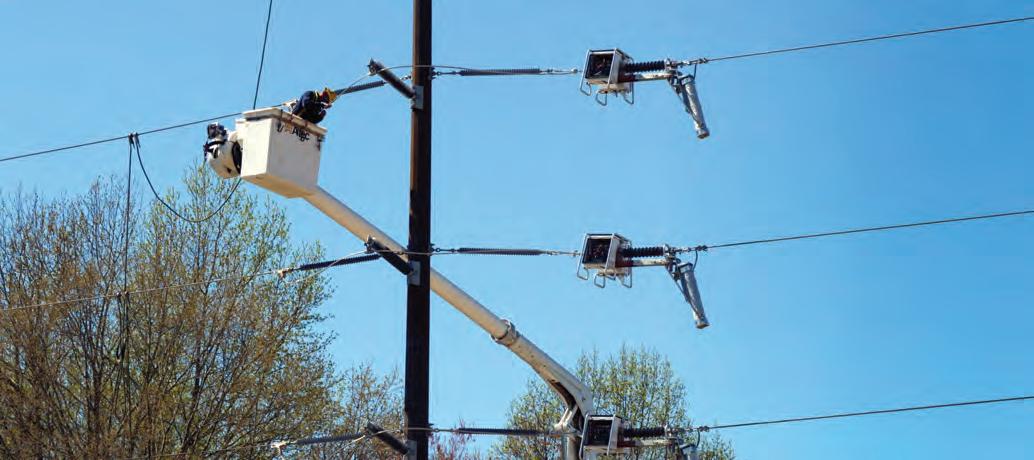
Wake Electric installs an advanced in-line switch at the Hares Crossroads substation, a first-ofits-kind technology designed to improve outage restoration and enhance power reliability for members.
Wake Electric is always looking for ways to make sure your lights stay on. As more people move into our area, we need new technology to keep power reliable. That’s why we’ve teamed up with Cleaveland/Price Inc. to install special in-line switches at our new Hares Crossroads substation near Selma. These switches are the first of their kind and will make restoring power after an outage much faster.
Wake Electric’s Board of Directors visited the new substation to see how these switches work. They learned how this advanced technology will help reduce power outages and keep electricity flowing smoothly for people in the area. Now, not only does the substation provide more power to support the growing community, but the new switches also make the system stronger and more reliable.
So, how do these new switches help? Think of them like traffic controllers for electricity. They help direct the flow of power and can quickly isolate a problem if something goes wrong—like when a tree branch falls on a power line. Unlike older switches that need special equipment to operate, these new in-line switches work automatically. That means Wake Electric can quickly find and fix problems without shutting down large sections of the power grid.
For example, if a power line gets damaged, these smart switches can pinpoint exactly where the issue is. That means our crews can get to the problem faster and restore power more quickly. This is a huge improvement over older systems that take longer to find and fix issues.
Chris Wright, Vice President of Engineering/Operations at Wake Electric, is excited about what this means for
members. “These new in-line switches help us deliver reliable power, even as our community grows,” he said. “This is the first time this technology has been used, and we’re eager to see how Cleaveland/Price can continue improving it.”
By using innovative technology like this, Wake Electric is making sure members get the best service possible—not just for today, but for the future too.

Cutting-Edge Technology: The newly installed in-line switches at Hares Crossroads substation help pinpoint outages faster, reducing downtime for Wake Electric members. Pictured, left to right: Chuck Cleaveland of Cleaveland/Price Inc. with Wake Electric’s Don Bowman, Kirk Metcalf and Chris Wright.


Powering the future! North Carolina’s brightest young leaders and coop chaperones take on Washington, D.C., during last year’s 2024 Youth Tour, proudly representing electric co-ops from across the state!
Two local students are among 40-plus ambitious young leaders from North Carolina selected to participate in a distinctive learning and leadership development opportunity this summer in the nation’s capital. This year’s Youth Tour will bring together over 1,800 students from across the country to meet federal elected officials, participate in networking events, and learn about our nation’s history and the importance of civic engagement.
High-school juniors Aimee Kim of Wake Forest and Isabella Sholar of Clayton were selected by Wake Electric to attend the 2025 Youth Tour in Washington, D.C., in June. The Youth Tour experience cultivates awareness of our cooperative’s mission and helps build leadership skills and an understanding that every person can make a difference.
Youth Tourists will explore some of the capital’s most notable areas, including sightseeing at historic memorials and museums, and cruising on the Potomac River. While in Washington, D.C., Aimee, Isabella and the other North Carolina delegates will also engage in discussions with select North Carolina senators and house representatives. Wake Electric is committed to investing in our younger members who we know hold the keys to the future success of our communities.
Utility vegetation management at Wake Electric is essential for maintaining safe, reliable and efficient electricity delivery to our members. By proactively managing trees and vegetation near power lines, we reduce the risk of outages caused by falling branches, overgrown plants, and severe weather. This practice ensures uninterrupted service and prioritizes public safety, all while protecting the natural beauty of the communities we serve.
Below are the roads scheduled for vegetation management this March. Please note that schedules may change due to weather or other unforeseen circumstances:
Bold Run Hill Rd
Bruce Garner Rd
Graham Sherron Rd
Granville Woods
Lawrence Rd
Magnum Dairy Rd
New Light Rd
Powell Rd
Purnell Rd
Thompson Mill Rd
Wayside Farm Rd
Woodland Church Rd
Woodleif Rd
For more info, visit: wemc.com/ vegetation-management

BOARD OF DIRECTORS
Mike Dickerson
President
Allen Nelson
Vice President
Greg Fuller
Secretary
Bob Hill
Treasurer
Joe Eddins
Joe Hilburn
Daniel Keel
Suzy Morgan
Jackie Thompson Sr.
PERSONNEL
Jim Mangum
General Manager & CEO
Don Bowman
Senior Vice President/ Assistant General Manager
Kirk Metcalf
Vice President of Member Services/ Human Resources
Scott Poole Vice President of Customer Service
Chris Wright Vice President of Engineering/Operations

By Jonathan Susser

A:Q:I experienced some less-than-pleasant conditions at home this winter, including cold floors and dry air. Any suggestions for addressing them? Could they indicate larger problems?
Simple solutions certainly exist for these common winter occurrences: slippers or socks for cold floors and humidifiers for dry air. But these steps (no pun intended) only mask the symptoms and don’t tackle their root cause. Humidifiers can even introduce problems of their own, as too much moisture can attract pests and lead to condensation, staining and unwelcome microbial growth.
The culprit behind your discomfort is likely air leakage. Air leaks allow warm air from your home to escape, and they bring in drier, cold air from outside. Gaps and cracks in your floors or ceilings (e.g., from wiring, plumbing, an attic access, HVAC vents), drafty windows or doors, and leaky ductwork can all contribute.
Therefore, a more durable, long-term approach would be to manage these air leaks and keep heated air inside and cold air out. Here are specific areas to assess.
Ducts and vents
Have your ductwork checked for proper or airtight connections and any holes, damage, obstructions or disconnections. Ideally, all parts of your ductwork are leak-free, like your plumbing pipes, but a typical house loses around 20% to 30% of the air that travels through its ducts because of the above complications, according to EnergyStar®
If you notice air not coming from a particular supply register (make sure all of these are clean and unblocked), it could indicate an issue with that duct (or maybe you’ll find a long-lost toy). A home energy or heating and cooling contractor can work to seal your ducts, though it is also a task you may be able to do yourself.
In addition to checking for gaps in your ductwork, see if the insulation (either inside or outside) is still present. If it’s not, consider patching holes and fastening in place to help maximize the efficiency of your heating system.
Another valuable area to examine for unintended openings is between your attic and living space. You may have to maneuver around insulation in your attic to locate holes, though dirty insulation may signal that one is close by. Everything that comes through the ceiling (e.g., wiring, plumbing, venting, piping and ducting) is likely to have a gap, crack or hole around it that lets warm, comfortable air pass through. Holes above cabinets or around showers may be easier to spot.
After air sealing, go back and make sure the insulation is consistent throughout the space, including the attic access door. Aim for at least 13 inches of insulation everywhere. At this point, adding blown-in insulation will be more effective than using batts.
The suggestions for above your living space (attic) apply to below it as well. Floors in existing homes are traditionally insulated with fiberglass batts between the floor joists. In addition to air sealing caps, cracks and holes in this area, fixing insulation that has fallen to gravity and gone missing can improve the effectiveness of your floor’s thermal blanket.
If your comfort problems persist, you could consider closing your crawlspace with insulation attached to the foundation walls. This is a major undertaking and entails much more than just shutting your crawlspace vents, but it can greatly enhance your living environment.
The ideas discussed in this article should help in any and all parts of your home. Along with improving your comfort, they’ll likely save you in energy and pest management, too.
Jonathan Susser is a content developer for Advanced Energy in Raleigh.

There’s something about the mountains of Western North Carolina — be it the unending layers of the Blue Ridge Mountains, the mysteries of shaded hollers or the warmth of WNC towns— that cause folks to wax poetic. As the region continues to recover from the devastating effects of Tropical Storm Helene, we asked readers to reflect on why we love the mountains.
The love of a place, of a specific region, becomes indelible when a connection is forged in childhood. From my earliest memories, the NC mountains have been an almost magical refuge. Feeling the piercing cold around my little girl ankles and bare feet in a clear spring-fed stream, I peer under stones to discover quiet friends — salamanders, crawdads, snails. My hand reaches to press on a bed of green moss, soft and firm, found on the overhanging rock. Breathing in the smell of wet leaves, I look up at the hills surrounding me and have the sensation of being enveloped in a warm and safe paternal hug. As a child, this is what I experienced — this physical grounding created a core understanding that we are part of this beautiful world, that we belong.
As an adult, the connection to the land and people of Western NC remains. After my family emerged from an
inner room of our Piedmont home where, sheltering from the storm on the last Friday in September 2024, we gradually realized our communication with loved ones in the mountains was disrupted. Images then began filtering through our computer screens of unimaginable destruction. The safe feeling I had always experienced in the valleys of our beautiful mountains was shattered. Through the heartbreak, my love grew as I saw the good people of Western NC and surrounding areas band together to help one another, mourn loss, and start the work of healing and repair. We experienced how love for place, love for the NC mountains, can allow service to rise over despair. This resilience and selflessness of the mountain community and friends, this of all things is the reason I love the NC mountains.
Jessica M. Benton Lobdell, Hillsborough A member of Piedmont Electric Cooperative
In just a two-hour ride, I can escape the familiar.
The NC mountains have been a gift to me from an early age. My first recollections of sleeping in a tent, eating dinner over a campfire, and singing under the stars were from summer camp and later as a camp counselor. From that time until now, I have run to the hills for recreation, restoration and reassurance.
While at UNC-Greensboro, I grew deep friendships on mountain retreats. Since then, I’ve witnessed the exchange of vows in this breathtaking setting, lounged on cabin vacations, and made memories at the Biltmore Estate with family home for the holidays, and out-of-town guests.
Each of us needs a respite from our weights and worries. That’s why I love a winding road trip to the NC mountains. There, I can reflect and regain a sense of the bigness of the world and all it has to offer while healing under the safe covering of fragrant evergreens and starlit heavens. Each visit to the NC mountains leaves me stronger, which explains so much about the determined, resilient people who call them home.
Catherine Plough, Monroe A member of Union Power Cooperative

Rocky Mountain Transplant I grew up in Denver, Colorado, in the shadow of the rugged Rocky Mountains.
When I first moved to Athens, Georgia, a friend asked me if I wanted to go to the mountains. I was unaware there were mountains near Athens.
As we drove into the Blue Ridge Mountains, I actually chuckled and told him that those were not mountains. Where was the timberline?
We became hiking partners and best friends and spent almost every weekend over 20 years hiking all over these beautiful mountains. I have found these mountains to be so friendly, green and welcoming. I especially love that in the winter, the tops of the mountains have bare trees that look like long eyelashes — so much more lovely than the rocky crags out west.
Sadly, my friend is gone now, but upon retirement I packed up and moved here to live in paradise.
Diane
Winstanley, Hayesville
A member of Blue Ridge Mountain EMC

JUNE’S QUESTION: What’s the
sports moment ever?
Whether it was a big game you were in, or one you watched, we want to hear about it! Tall tales excepted.
Submit your answer (up to 300 words) for a chance to be in an upcoming issue. We retain reprint rights, and we’ll pay $50 for those we publish in the print version of the magazine.
Deadline: April 15
Online: carolinacountry.com/voices Mail:
Carolina Country —Carolina Voices 3400 Sumner Blvd. Raleigh, NC 27616







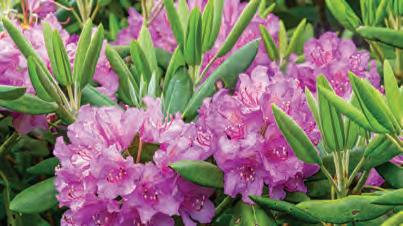
By Tara Verna
North Carolina’s colder-than-normal winter included a January storm that swept freezing temperatures and snow into our region. So it stands to reason that residents may be more than a little eager to take part in an upcoming spring home and garden show. Here’s a sampling from across the state.
Mountains Garden Jubilee
May 24–25, Hendersonville bit.ly/hgj2025
Garden Jubilee, one of the largest gardening shows in Western North Carolina, offers nearly 200 plant and craft vendors, transforming Hendersonville’s historic downtown into a garden wonderland for an estimated 200,000 attendees.
Local and regional nurseries, orchards and crafters will offer a wide variety of plants and handmade delights, and gardening experts will be on hand to share the latest gardening tips and techniques.
Others Garden Shows of Note
Growing in the Mountains
Spring Plant Sale
May 2–4, Asheville
bit.ly/gitm2025
Official Fairgrounds Southern
Ideal Home Show
April 11–13 | Sept. 12–14, Raleigh
Cost: $12
bit.ly/raleigh-ihs
Azalea Garden Tour
April 4–6, Wilmington
Cost: $50
bit.ly/AGTWilmington
Hillsborough Garden Tour
May 3, Hillsborough Cost: $40 in advance bit.ly/hgc2025
The Hillsborough Garden Club celebrates “100 Years of Gardening Together” on its 2025 garden tour which meanders through 10 cultivated private gardens as well as 3 public ones. A few of the highlights include:
n An undeveloped lot turned into a certified wildlife habitat;
n A serene garden of deer-resistant, shade-loving plants and a canopy of mature pines and magnolia trees;
n A four-acre woodland preserve with nearly a dozen garden rooms including a permaculture ecosystem that provides edibles and medicinal plants; and
n The public NC Botanical Garden’s Wonder Garden, where children can build with natural blocks, dig in the dirt and write notes to the fairies.
Coastal Home and Garden Show
March 1–2, Morehead City Cost: $5 bit.ly/fb-coastal2025
This is one of the larger shows around with 12,000-square-feet of exhibits, so if you’re looking for inspiration, you should be able to find it here. Pick up ideas for outdoor living, gardening and landscaping, sunrooms and yard décor, even new ways to eliminate pests. Plus, you can pick up swimming pool or hot tub tips, the latest in yard tools and equipment, hardscape and landscape ideas with custom built outdoor kitchens and grills and the newest in renovation ideas and supplies.
Remodeling? Professionals will be on hand to share the latest trends in color and style designs. Redesign your bathroom, kitchen or turn your backyard into a tropical oasis.

Tara Verna is the creative services associate for Carolina Country.

Story and photos by L.A. Jackson
“Pretty” is the defining factor many gardeners rely on when it comes to buying daylilies. But beyond this desirable quality, much like the shadows and whispers lurking in an irresistible mystery novel, there are strange codes often found on container labels and online descriptions that, to the knowing, can help determine what makes a pretty daylily perfect for a particular garden scheme. Here’s how to crack the code and shop like a pro:
EE — Extra Early A bloom period indicator, EE defines daylilies that are the first to flower in the spring. This eager starter is followed by E (Early), EM (Early Midseason), M (Midseason), LM (Late Midseason), L (Late) and VL (Very Late) daylilies. Obviously, selecting a wide range of these time travelers can extend the pleasure of a daylily garden for months.
RE — Rebloom. Such daylilies have a fabulous first flush of flowers, and then do it again with a second or continuing show. For the best displays, they need a little help in the form of deadheading, additional fertilizer and regular waterings when the rains don’t come.

EV — Evergreen. These daylilies remain stubbornly in foliage through typical North Carolina winters. One step down, an SEV selection is semi-evergreen, meaning it might retain its leaves in a mild winter but probably won’t if temperatures turn abominably cold. And no matter what the winter is like, a DOR (Dormant) daylily will lose its foliage after the first autumn frosts. It is a good idea to mark the locations of SEV and DOR daylilies before the growing season winds down so they won’t be dug up during the planting frenzy to come the following spring.
FR — Fragrant. Some daylilies are sweetly scented in perfumed pleasures that can range from a slightest of slight lovely smells to obvious olfactory awakenings. Daylilies that are deemed to be intensely aromatic are occasionally tagged VFR — (Very Fragrant).
TET — Tetraploid. There are two types of daylilies, tetraploids and diploids (DIP), with tetraploids having twice the sets of chromosomes

versus diploids. Without wading deep into DNA gobbledygook, TET cultivars tend to have larger flowers with brighter colors supported on stronger stems. This doesn’t mean diploids are visual wimps: among their ranks are some of the prettiest pinks, as well as many of the more popular spider and double-flowered daylilies.
L.A. Jackson is the former editor of Carolina Gardener Magazine. Contact L.A. at lajackson1@gmail.com.,
L.A.’s website of the month: The Living Seed Company (livingseedcompany.com), a family-run, e-garden store in Weaverville with a wide variety of open-pollinated organic and heirloom seeds for vegetable and ornamental gardeners.
Garden To-Do’s for March
Night-blooming daylilies? You bet. They even have their own special codes! NOC is for Nocturnal daylilies, a delightfully strange group that blooms late in the day and persists through the night. Some Nocturnal daylilies flaunt their flowers well into the new dawn, meaning they remain enjoyable sights to see as you stroll in the garden with your morning coffee. Extended (EXT) represents a large group that opens like regular daylilies — in the morning — but stay in bloom for 16 hours or more, way past normal daylilies’ bedtime at sunset.
□ If you are anxious to get your spring veggie patch growing, this month is a good time to plant asparagus, carrots, cabbage, Swiss chard, kale, lettuce, mustard greens, onions, potatoes, turnips, spinach, rutabagas and/or radishes in gardens across the state.
□ For dependable, extended service, change the oil in your lawn mower about every two years. It’s an easy chore, but if you aren’t mechanically inclined, your local, friendly small engine repair shop can do the deed.

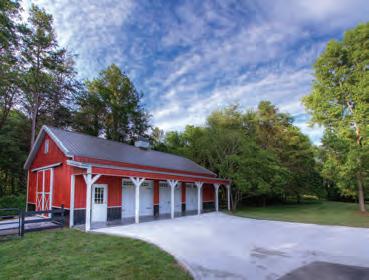
NURSERY STOCK & SEED
GROW HALF DOLLAR SIZE MUSCADINES & BLACKBERRIES, FREE CATALOG. 200 varieties fruit, nut trees, vines & berries. 1-800-733-0324. ISON’S NURSERY, Brooks, Georgia 30205 www.isons.com


Smart homeowners around the world have scrapped their old furnaces and air conditioners and replaced them with a WaterFurnace geothermal comfort system. That’s because geothermal comfort systems use the free, renewable energy found in your own backyard to save up to 70% on heating, cooling and hot water. You won’t need that old inefficient furnace or that unsightly outdoor air conditioner because a WaterFurnace system provides complete comfort for your home with a single unit. And because the system doesn’t burn fossil fuels, there are no fumes or carbon monoxide concerns. Make the smart switch to geothermal. Contact your local WaterFurnace dealer today to learn more.



With ‘Dang Good’ sauce
This may be the best meatloaf you’ve ever had! Found in a recipe box decades ago when I was managing a hospital kitchen, it was always a patient and staff favorite. If you like a little “crust” on your meatloaf, ditch the loaf pan for as much surface area as possible.
2 pounds meatloaf mix (or 80/20 ground beef)
1½ cups breadcrumbs*
1 large onion, finely chopped
¾ cup ketchup
2 eggs
1 teaspoon black pepper
2 teaspoons salt
½ teaspoon baking soda
4 tablespoons water
1 can (15-ounce) tomato sauce
1 sauce can of water
¼ cup yellow mustard
3 tablespoons each brown sugar and molasses
¼ cup apple cider vinegar
Combine all meatloaf ingredients in a bowl (meat through salt) and mix well. Place into an oiled baking dish and form into a loaf, making indentions to puddle sauce. Combine baking soda and water and brush loaf to make it extra crusty. Let stand 20 minutes before baking.
Preheat oven to 350 degrees.
Combine sauce ingredients (tomato sauce through vinegar) and lightly drizzle most of the sauce over the loaf, enough to pool around it. Reduce remainder on a low simmer as extra for cooked loaf.
Bake 40–50 minutes until the interior reaches 165 degrees. Let stand 5 minutes before serving. Serve with reduced sauce.
*Crumb options: cracker or stale breadcrumbs, panko, packaged stuffing mix or crushed pork rind
Yield: 6 servings
Upon arrival in America, Irish immigrants found corned beef a reliable substitute for the salted pork they were accustomed to. Cabbage made for an affordable accompaniment. Here’s a fun twist on these Irish-American staples. Serve with cornbread if you like.
2 tablespoons olive oil
1 small onion, diced
1 cup carrots, chopped
1 cup celery, chopped
3 cloves garlic, minced
8 cups beef (or chicken) broth
2 cans (12-ounce) corned beef, chopped
3 medium potatoes, cubed
2 cups cabbage, chopped
¼ teaspoon black pepper
8 ounces pasta, such as macaroni
1 can (16-ounce) diced tomatoes Salt to taste
2 tablespoons parsley, chopped, optional
Heat oil in a 6-quart Dutch oven or soup pot over medium-high heat. Add onion, carrots and celery. Cook for 5 minutes, stirring.
Add garlic and cook until fragrant, stirring frequently (about 30 seconds).
Pour broth into the pot and add corned beef, potatoes, cabbage and pepper.
Submit your recipe online at: carolinacountry.com/myrecipe. Contributors whose recipes are published will receive $25.

This cheesy side pairs with just about anything. Serve it with a simple supper, or let it hold its own with more elaborate meals, too.
1 large head cauliflower, cut into florets 4–6 cloves garlic
Olive or avocado oil
Salt and pepper
1 carton/can (16-ounce) half-and-half or evaporated milk
2 cups Swiss cheese, grated
2 tablespoons butter
1 tablespoon Dijon mustard
1 cup canned fried onions
Paprika, optional
Preheat oven to 400 degrees. Toss florets and garlic with oil. Spread onto sheet pan. Dust with salt and pepper. Roast for 30 minutes, turning once, until slightly fork-tender. Remove and put into a sprayed baking dish. Mash garlic cloves with a fork. Reduce oven heat to 350 degrees.
Heat cream or milk with mashed garlic in a saucepan until it just starts to boil. Remove from heat and add cheese, butter and mustard, stirring until the cheese melts. Add salt and pepper if needed.
Pour the cheese sauce over the cauliflower.
Bake about 20–25 minutes until bubbly. Scatter with the fried onions and bake 5–7 minutes more until browned. Serve immediately while warm.
Yield: 6 servings
Cook until potatoes are not quite done. Add noodles and tomatoes. Cook until noodles are done. Add more broth if a thinner soup is desired. Salt to taste and sprinkle parsley on top.
Yield: 6 servings


















MARCH 1–2
Camellia Show
Competition, exhibits, demonstrations, Q&A Cape Fear Botanical Garden, Fayetteville, 910-308-7478
JAN. 19–MARCH. 16
Dome Sweet Home
Luxury domes open to public Stock + Grain Assembly, High Point 336-884-7862
FEB. 27–MARCH 1
Carolina Jazz Festival
Various locations, Chapel Hill 919-962-1039
MARCH 1–2
Sky Valley Zip Tour
Sky Valley Zip Tours, Blowing Rock 828-264-0002
Mardi Gras on Middle Lane Downtown, Beaufort 252-528-8640
Winter Reds
Red wine tastings
Participating wineries, Yadkin County 336-679-2200
MARCH 2
Mardi Gras Parade Downtown, Asheville 828-279-4132
MARCH 5–8
Rice Festival
Various locations, Leland 202-355-3695
MARCH 14–15
Carolina FiberFest Competition, vendors, food NC State Fairgrounds, Raleigh
MARCH 14–16
Vintage Market Days Competition, vendors, food WNC Agricultural Center and Davis Event Center, Fletcher 917-224-4035

January’s winner
MARCH 15–16
Gem and Mineral Show Gastonia Farmers Market, Gastonia
MARCH 16–23
Fringe Arts Festival Various locations, Asheville 828-254-2621
MARCH 22
Assault on Blackrock 7-mile trail race competition Pinnacle Park, Sylva 828-506-2802
Spring Art Show of Greenville Brushstrokes First Christian Church, Greenville
MARCH 15
Croatan Buck Fifty Ride Cycling competition Carteret County Speedway, Swansboro 252-725-1438
Quilt Show
Blue Ridge Mall, Hendersonville 828-506-7476
St. Patrick’s Day Festival Emerald Plantation Shopping Center, Emerald Island 252-354-3424
MARCH 23
Duo Baldo
Musical comedy team Old Theater, Oriental 252-617-2125
MARCH 29
Spring Festival Downtown, Vass 910-245-4677
MARCH 29
No Man’s Land Film Fest
All-women adventure film festival The Appalachian Theatre, Boone 828-865-3000
Visit carolinacountry.com/calendar for more information about each event, including links to the most current information, or to submit your own event.
where in Carolina Country is this?
Send your answer by March 15, with your name, address and the name of your electric cooperative. Online: carolinacountry.com/where
By mail: Where in Carolina Country? 3400 Sumner Blvd., Raleigh, NC 27616
Multiple entries from the same person will be disqualified. The winner, chosen at random and announced in our May issue, will receive $25.
Have a roadside gem you’d like to share? Submit a photo, plus a brief description and general location information, at carolinacountry.com/where
The January “Where Is This” photo by Hunter Villano features the iconic Dairy Queen (DQ), built in 1947 on Wilkinson Boulevard in Charlotte. Readers recognized the ice cream shop as a favorite from childhood, high school dating and into adulthood. Some noted that the art deco-laden DQ is the oldest in the state and the third oldest in the Southeast. The winning entry chosen at random from all correct submissions came from Julie King of Rich Square.



























A promise between neighbors still means something.

It means being there in storms and sunshine, lending a hand when it’s needed most. It means supporting the community and local people — from students to teachers to business owners.
It means providing reliable, affordable power, now and for generations to come. That’s our promise to you.

Offer
Give out $70,000 in teacher grants every year
Hold several drawings each year for gift cards for students who make at least one “A” on their report cards
Award scholarships for basketball camps at NC State and UNC–Chapel Hill
Give out grants quarterly to nonprofit agencies in the area
Send two students to Washington, D.C., for the annual Youth Tour
Learn more about how Wake Electric serves our community at wemc.com/ community






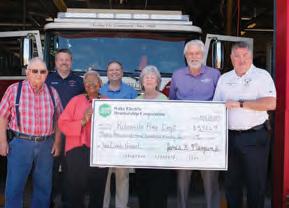


Did you know that the average electric vehicle can save a driver who drives 15,000 miles a year about $850 annually on fuel?
In addition, Wake Electric offers several rate options that can benefit EV owners. For example, charging your EV overnight on a qualified electric rate could cost less than a dollar!
Ready to make the switch?

WE WANT TO BE YOUR ENERGY PARTNER AND HELP YOU GET THE MOST SAVINGS OUT OF YOUR ELECTRIC VEHICLE.